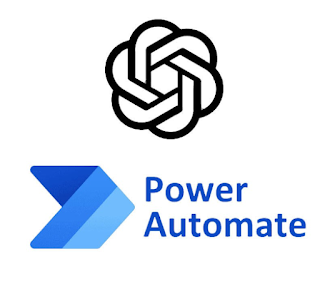Steps to Integrate ChatGPT with Power Automate
Integrating ChatGPT with Power Automate (formerly known as Microsoft Flow) can enable you to leverage the power of AI chatbots in your workflows and automate various tasks. Here's a step-by-step guide on how to integrate ChatGPT with Power Automate, along with some examples:
- Set up a ChatGPT API: You need to have access to an API that allows interaction with ChatGPT. There are various providers available, including OpenAI's GPT-3.5 API. You'll typically need an API key to authenticate your requests.
- Create a new Power Automate flow: Log in to the Power Automate portal (https://flow.microsoft.com/) and click on "Create" to start a new flow.
- Define a trigger: Choose an appropriate trigger for your workflow. For example, you might want to trigger the flow when a new email arrives, when a form is submitted, or when a specific event occurs in another application.
- Add an action: Click on the "+" icon to add an action to your flow. In the search bar, type "HTTP" and select the "HTTP" action from the list. This action allows you to make HTTP requests to external APIs.
- Configure the HTTP action: In the HTTP action, you'll need to specify the details of your ChatGPT API. Provide the API endpoint URL and the required authentication parameters, such as headers and API key.
- Construct the chat message: Before interacting with ChatGPT, you need to construct a chat message payload. This typically includes the message content, user ID, and any other relevant information. You can use dynamic content from previous steps in Power Automate to populate this payload.
- Make an API call to ChatGPT: Use the HTTP action to make a POST request to the ChatGPT API endpoint. Pass the chat message payload as the request body.
- Handle the API response: After making the API call, you'll receive a response from ChatGPT. You can extract the relevant information from the response using Power Automate expressions and dynamic content. For example, you might want to extract the generated chat response from the API response.
- Continue with your workflow: Based on the response received from ChatGPT, you can add further actions to your flow. This might include sending an email, updating a database, or performing any other desired task based on the AI-generated response.
Here's an example scenario to help illustrate the integration:
- Scenario: Automatic Customer Support
- Trigger: When a customer submits a support request form.
- Action: Get the details of the support request and store them in variables.
- HTTP Action: Configure the HTTP action with the ChatGPT API endpoint, authentication parameters, and request body.
Request Body:
{
"messages": [
{ "role": "system", "content": "You are now connected to the customer support." },
{ "role": "user", "content": "<Input from customer form>" }
]
}
Handle Response: Extract the generated response from the ChatGPT API response.
Response Body:
{
"id": "chatcmpl-6p9XYPYSTTRi0xEviKjjilqrWU2Ve",
"object": "chat.completion",
"created": 1677649420,
"model": "gpt-3.5-turbo",
"usage": {"prompt_tokens": 56, "completion_tokens": 31, "total_tokens": 87},
"choices": [
{
"message": {
"role": "assistant",
"content":


Comments